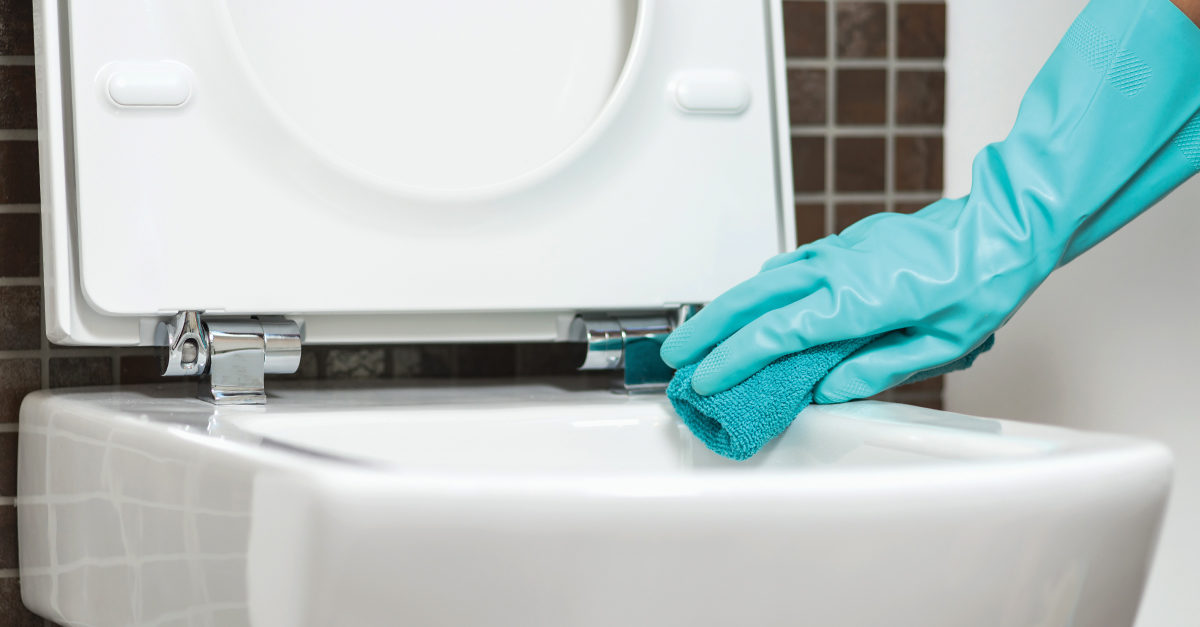In any number of public and commercial settings—from office buildings, hotels, restaurants, and schools to health care facilities and other businesses—restrooms are consistently cited as one of the toughest areas for cleaning and maintenance professionals to maintain—and the No. 1 source of customer complaints. This is due in large part to the dual imperatives of public restroom maintenance: cleaning for aesthetics and cleaning for health.
Eliminating odors and maintaining a visibly clean restroom is extremely important, as research has shown consumer perceptions of facilities’ restrooms can impact bottom lines. However, restroom cleanliness is also very important to public health.
The following is an overview of the critical role restroom cleaning and disinfection plays in protecting public health, and steps that in-house custodial professionals and building service contractors (BSCs) can take to help control and prevent the spread of germs in their facilities’ restrooms.
Public Restrooms and Public Health
Some people mistakenly assume that illness-causing germs and multi-drug resistant organisms (MDROs), or superbugs, are a health care-specific problem and don’t pose much of a threat in other public settings. However, there is a growing body of research that shows that many of these microbes are commonly found in public restrooms and are easily transmitted between individuals through contact with contaminated surfaces.
In a 2011 study published in the journal PLoS ONE, researchers took samples from 10 restroom surfaces on the University of Colorado at Boulder campus, including door handles into and out of the restroom, handles into and out of a restroom stall, faucet handles, the soap dispenser, toilet seat, toilet flush handle, floor around the toilet, and floor around the sink in restrooms. The study, Microbial Biogeography of Public Restroom Surfaces, found that human-associated microbes were commonly found on restroom surfaces.
From a public health perspective, the findings were significant because the high number of skin and gut-associated bacteria found throughout the restrooms suggested that “pathogens commonly found on skin (e.g. Staphylococcus aureus) could readily be transmitted between individuals by the touching of restroom surfaces.”
In another study of university restrooms at San Diego State University in California, researchers found within one hour of cleaning and disinfection, bathrooms were completely recontaminated with microbes, and fecal bacteria was found on a variety of surfaces from toilet seats to soap dispensers.
While these and other studies have helped to shed light on the potential public health implications of contamination in public restrooms, evidence in recent years has shown that non-health care restrooms are a source of more dangerous antibiotic-resistant bacteria.
In a 2013 study, “Could Public Restrooms Be an Environment for Bacterial Resistomes?” published in PLoS ONE, researchers from the Queen Mary University of London took a closer look at Staphylococcaceae bacteria—which are commonly found in restrooms and are a major cause of infections both in hospitals and the larger community—to determine if non-health care restrooms could be a source of antibiotic-resistant bacteria. To test this theory, the research team collected samples from public restrooms in public buildings, testing samples from various sites in each restroom. The researchers identified 19 different types of Staphylococcaceae from the restroom samples, and more than one-third (37.8 percent) were antibiotic-resistant.
Controlling the Spread of Germs in Restrooms
There’s no question that restroom cleaning is one of the toughest and most important jobs in the industry, but there is good news: Health-focused restroom maintenance can actually help ensure that restrooms are both aesthetically and hygienically clean.
Oftentimes, according to studies published in the Journal of Applied Microbiology and the Journal of Applied and Environmental Microbiology, seemingly aesthetic issues, such as unpleasant odors and visibly stained or soiled surfaces, can signal the presence of harmful microorganisms, such as Shigella, Salmonella, Hepatitis A, E. coli, and norovirus, so health-focused cleaning and disinfecting protocols must also address aesthetics.
Here are some cleaning and disinfecting tips that any facility can follow to help prevent the spread of germs and improve aesthetics in public restrooms:
- Pre-clean surfaces. Remove debris and bodily soils, such as urine, feces, and vomit, and then use a U.S. Environmental Protection Agency (EPA)-registered product with kill claims for contagious and hard-to-kill pathogens, such as methicillin-resistant Staphylococcus aureus (MRSA), influenza, and norovirus, to disinfect surfaces.
- Vet your products. Pay particular attention to disinfecting toilet surfaces and other surfaces frequently touched by hands by using products designed for those surfaces. Remember to check the product label and follow manufacturer’s instructions to ensure proper use and contact time. Different products have different contact times for killing certain pathogens.
- Don’t mask odors. Eliminate restroom odors by breaking them down at their source. Not all products can actually break down and eliminate the root cause of urine odor—uric acid crystals. This is why it is important to choose products that include stable active ingredients, such as ready-to-use hydrogen peroxide-based solutions, which fight urine odors and stains and require no additional training for cleaning staff to use.
- Clean the floors. Remember that floor care is important, too. Remove grime and scuff marks on restroom floors, and also disinfect them. Restroom floors are often germ hot spots with about 230 bacterial species, compared to 150 species in other restroom locations, as reported in the survey, “Microbial Biogeography of Public Restroom Surfaces.”
- Clean mirrors and glass. Keep them shining by removing water marks, soils, and streaks with a general glass and surface cleaner. Scrub away soap scum on sinks, countertops, and other surfaces with products specifically formulated to break it down.
- Encourage hand hygiene. Remember, handwashing is an important part of preventing the spread of infections. Cleaning staff should wash their hands regularly with soap and warm water, especially after emptying waste baskets, touching used tissues, or using the bathroom.
The potential for germ transmission in public restrooms will always be high. However, by implementing thorough cleaning and disinfecting protocols that focus on tell-tale signs of contamination, such as unpleasant odors and visible stains or soils, and addressing key surfaces where germs are most common, cleaning professionals can help provide a healthy environment for building occupants and visitors.
This article was reviewed for current accuracy May 18, 2018 following its original post September 1, 2015.



